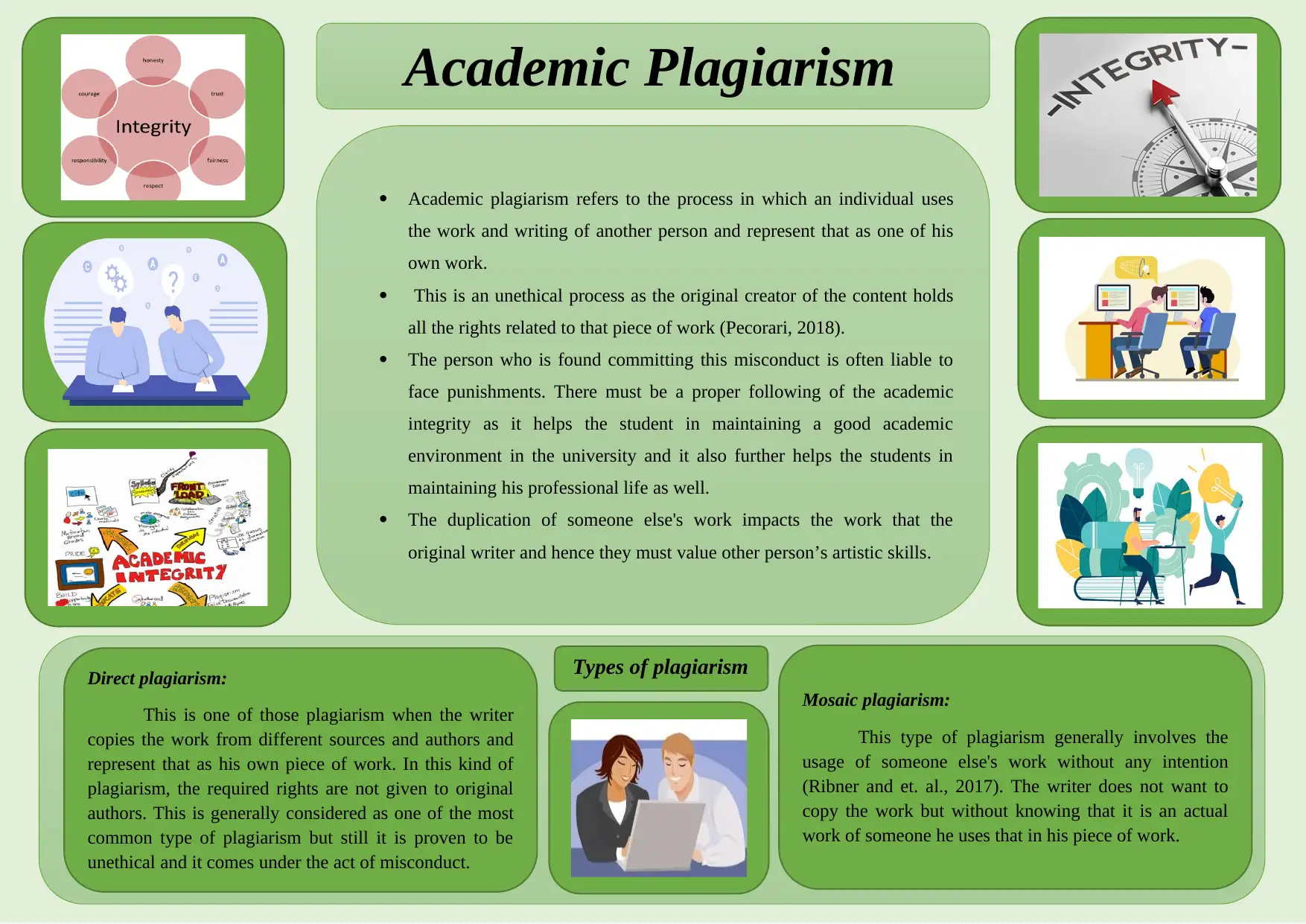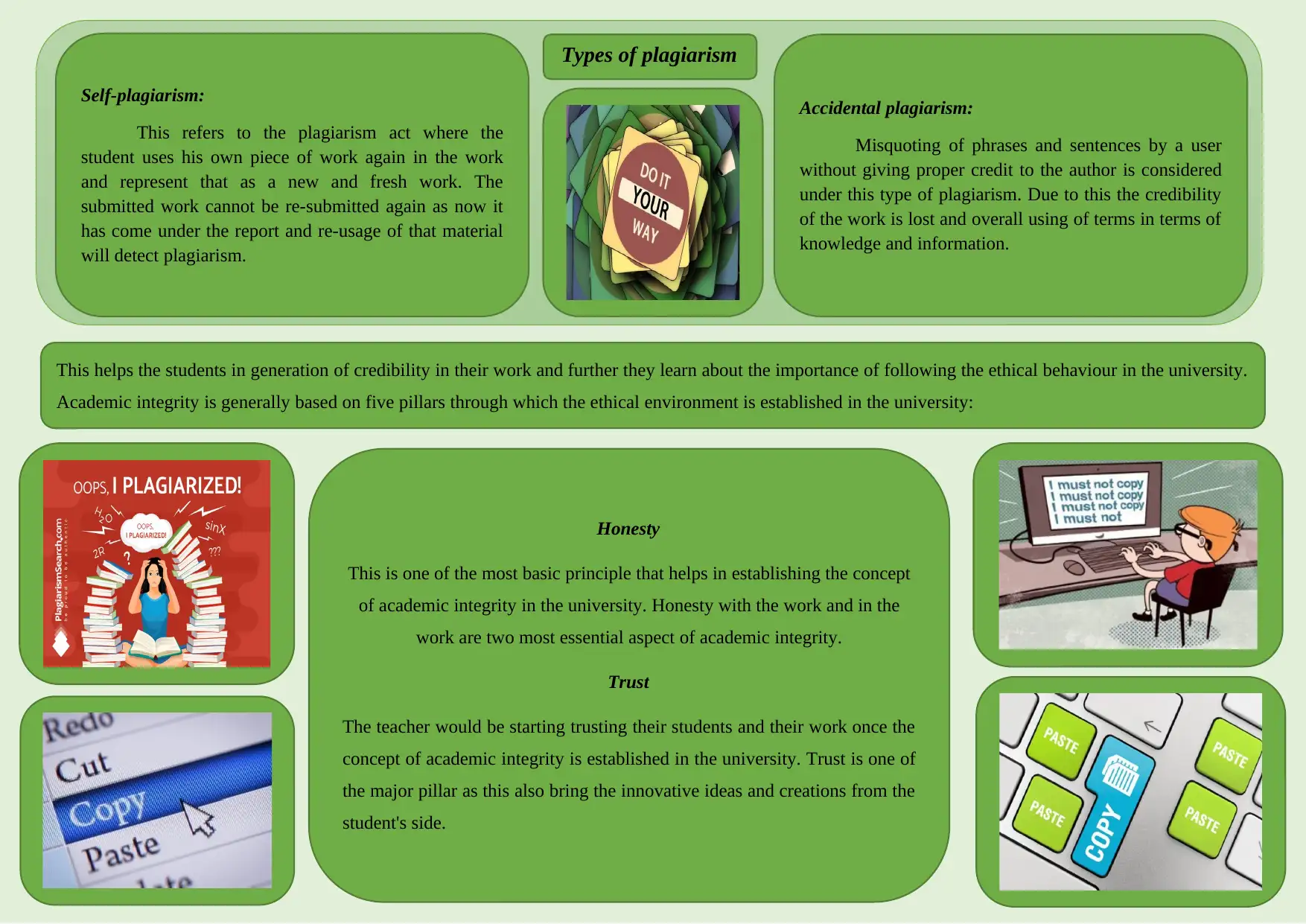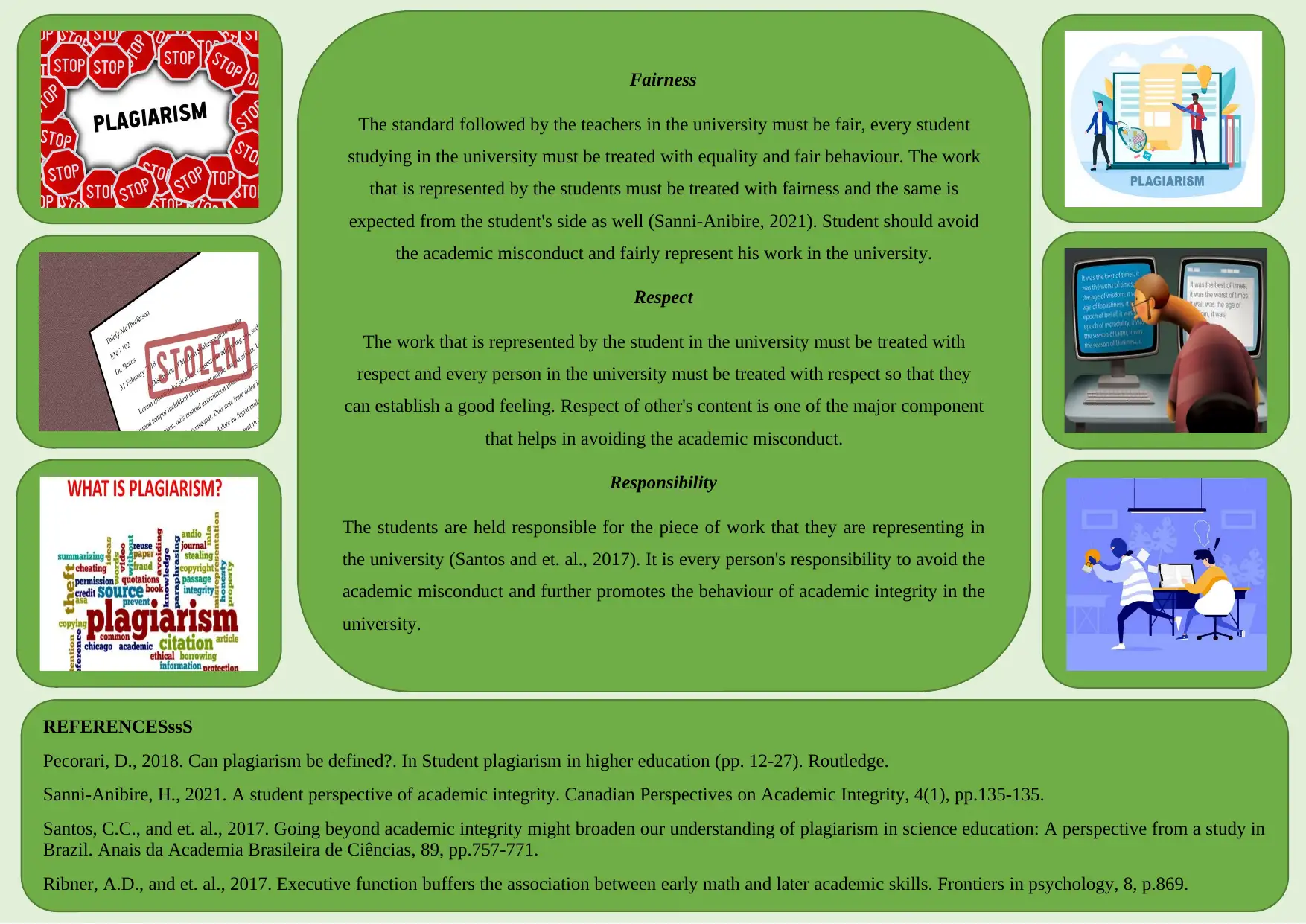A Comprehensive Look at Academic Plagiarism, Ethics, and Integrity
VerifiedAdded on 2023/06/18
|3
|829
|239
Essay
AI Summary
This essay provides a detailed explanation of academic plagiarism, defining it as the act of using another person's work without proper attribution. It highlights the unethical nature of plagiarism and its potential consequences, emphasizing the importance of academic integrity in maintaining a positive academic environment and fostering professional ethics. The essay outlines various types of plagiarism, including direct, mosaic, self-plagiarism, and accidental plagiarism, detailing how each manifests and their implications. Furthermore, it explores the five pillars of academic integrity: honesty, trust, fairness, respect, and responsibility, explaining how these principles contribute to an ethical academic environment. The document concludes by underscoring the responsibility of students in upholding academic integrity and avoiding misconduct, referencing relevant academic sources to support its claims. Desklib provides access to this document and many other resources for students.
1 out of 3







![[object Object]](/_next/static/media/star-bottom.7253800d.svg)